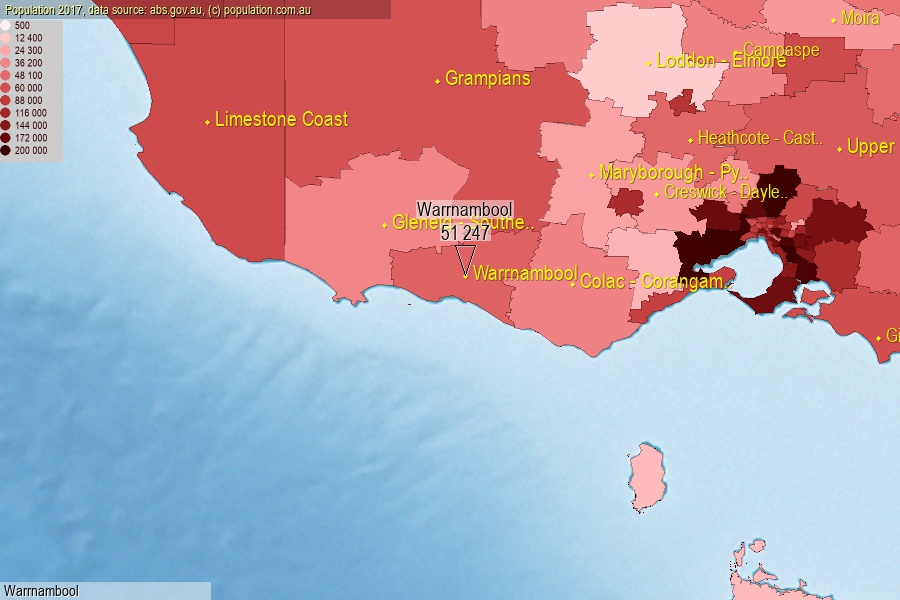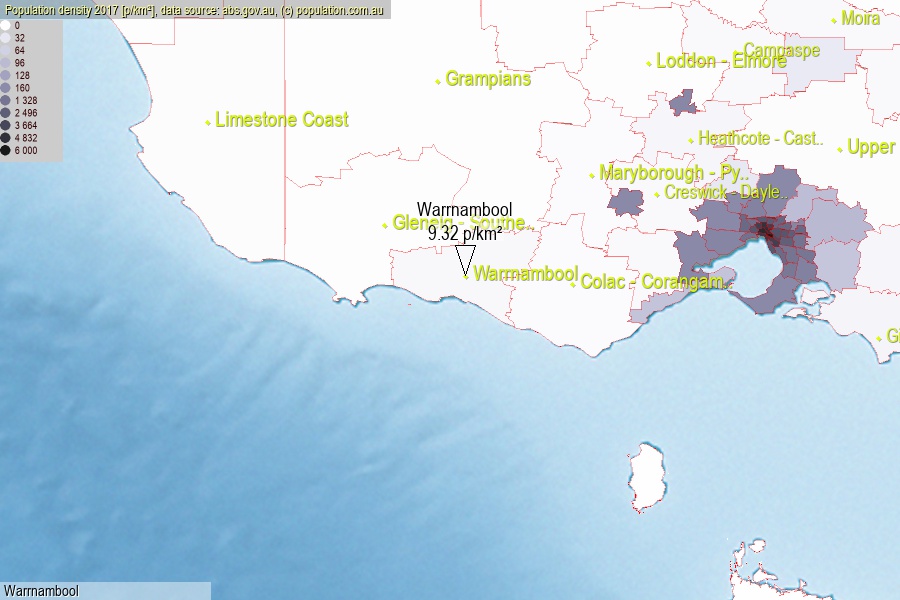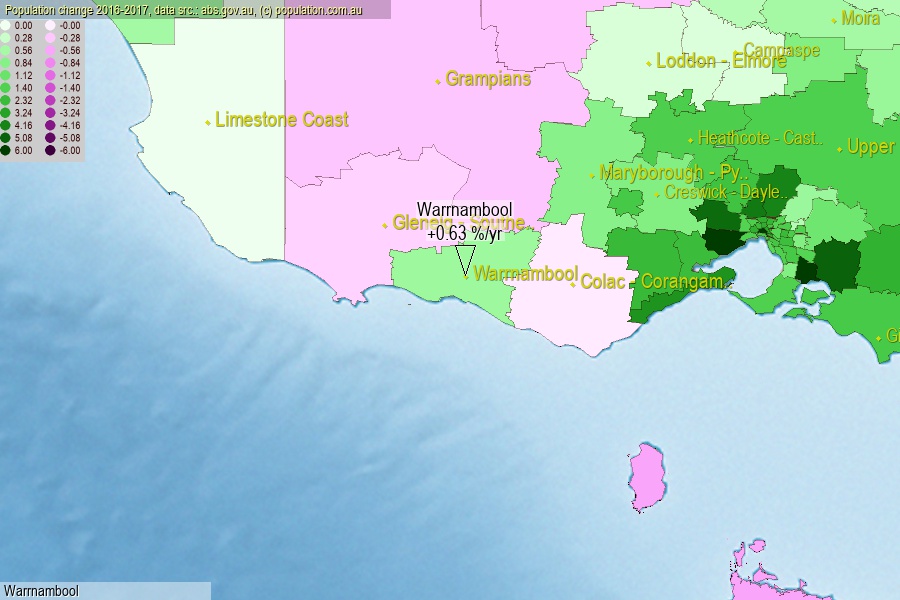 population.com.au
population.com.auLast official estimated population of Warrnambool (as Statistical Area Level 3) was 51 247 people (on 2017-06-30)[2]. This was 0.21% of total Australian population and 0.797% of VIC population. Area of Warrnambool is 5 496.00 km², in this year population density was 9.32 p/km² . If population growth rate would be same as in period 2016-2017 (+0.63%/yr), Warrnambool population in 2025 would be 53 880. [0]



Click to enlarge. Warrnambool is located in the center of the images.
Population [people], population density [p./km²] and population change [%/year] [2]
View borders » (new window) [4]
[2001-2002] +1.18 %/Y
[2002-2003] +0.83 %/Y
[2003-2004] +0.60 %/Y
[2004-2005] +0.68 %/Y
[2005-2006] +1.08 %/Y
[2006-2007] +0.95 %/Y
[2007-2008] +0.89 %/Y
[2008-2009] +1.02 %/Y
[2009-2010] +1.00 %/Y
[2010-2011] +0.88 %/Y
[2011-2012] +1.04 %/Y
[2012-2013] +0.99 %/Y
[2013-2014] +0.77 %/Y
[2014-2015] +0.70 %/Y
[2015-2016] +0.75 %/Y
[2016-2017] +0.63 %/Y
[0] Calculated with linear interpolation from officially estimated population
[1] Read more about SA3 and Australian Statistical Geography Standard (ASGS) on abs.gov.au
[2] Population data from Australian Bureau of Statistics (Population and density: 2017; change: 2016-2017)
[3] Digital Boundaries: Australian Statistical Geography Standard (ASGS) 2016.
[4] Border coordinates are simplifyed using Ramer-Douglas-Peucker algorithm.